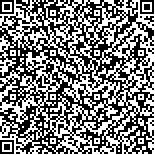康星宇,郭壮丽,高呈飞,等.电针夹廉泉穴治疗脑卒中后口咽期吞咽障碍的临床研究[J].中华物理医学与康复杂志,2023,45(2):119-124
扫码阅读全文

|
| 电针夹廉泉穴治疗脑卒中后口咽期吞咽障碍的临床研究 |
|
| |
| DOI:10.3760/cma.j.issn.0254-1424.2023.02.005 |
| 中文关键词: 电针 吞咽障碍 神经肌肉电刺激 视频透视吞咽检查 表面肌电图 |
| 英文关键词: Electroacupuncture Dysphagia Neuromuscular electrical stimulation Videofluoroscopy Surface electromyography |
| 基金项目:山东省医药卫生科技发展计划项目(2013ws0268);山东省自然科学基金青年项目(ZR2021QH062) |
|
| 摘要点击次数: 4066 |
| 全文下载次数: 4720 |
| 中文摘要: |
| 目的 观察电针夹廉泉穴对脑卒中后口咽期吞咽障碍(PSOD)的影响。 方法 选取符合标准的PSOD患者45例,按随机数字表法分为电针组、神经肌肉电刺激(NMES)组和对照组,每组患者15例。对照组患者给予常规吞咽康复训练,电针组在此基础上增加电针夹廉泉穴治疗,NMES组在常规吞咽康复训练的基础上增加双侧颏下肌群NMES。电针和NMES均每日1次,每次30 min,每周治疗5 d,连续治疗3周。于治疗前和治疗3周后(治疗后)对3组患者进行吞咽造影检查(VFSS),采用功能性经口进食量表(FOIS)、标准吞咽功能评价量表(SSA)、渗漏-误吸量表(PAS)和改良式钡剂吞咽障碍量表(MBSImp)评估其吞咽功能,另采用表面肌电图(sEMG)检测患者空吞咽和吞咽5 ml温水时颏下肌群的肌肉功能[包括波幅峰值、波幅均值和平均吞咽时程]。 结果 治疗后,3组患者的SSA、FOIS、MBSImp、PAS评分以及空吞和吞咽5 ml温水时sEMG的波幅峰值、波幅均值、平均吞咽时程较组内治疗前均显著改善(P<0.05),且电针组和NMES组上述指标均显著优于对照组治疗后(P<0.05)。电针组的SSA评分[(22.40±3.40)分]、FOIS分级[(6.13±0.92)级]、MBSImp评分[(7.8±1.82)分]、PAS评分[(1.73±0.70)分]、空吞唾液时sEMG的波幅峰值[(92.53±18.28)μV]、空吞唾液时sEMG的波幅均值[(23.45±2.93)μV]、空吞唾液时sEMG的平均吞咽时程[(1.50±0.15)s]、吞咽5 ml温水时sEMG的波幅峰值[(96.79±19.99)μV]、吞咽5 ml温水时sEMG的波幅均值[(23.83±3.01)μV]、吞咽5 ml温水时sEMG的平均吞咽时程[(1.52±0.14)s]均显著优于NMES组和对照组治疗后,差异均有统计学意义(P<0.05)。 结论 电针夹廉泉穴可显著改善脑卒中后口咽期吞咽障碍患者的吞咽功能,且电针组的治疗效果优于神经肌肉电刺激组。 |
| 英文摘要: |
| Objective To observe any effect of electroacupuncture applied to the Jialianquan points in treating post-stroke oropharyngeal dysphagia. Methods Forty-five stroke survivors with oropharyngeal dysphagia were randomly divided into an electroacupuncture group (n=15), a neuromuscular electrical stimulation group (n=15) and a control group (n=15). All groups received 30 minutes of routine swallowing function training 5 times a week for 3 weeks. The electroacupuncture group was additionally provided with 30 minutes of electroacupuncture applied to the Jialianquan (CV23) points, and the neuromuscular electrical stimulation group instead received 30 minutes of neuromuscular electrical stimulation over the bilateral submental muscles. Videofluoroscopic swallowing studies were performed before and after the 3 weeks of treatment. Standardized swallowing assessment was conducted producing functional oral intake scale ratings, modified barium swallow impairment profiles and the penetration-aspiration scale scores. Surface electromyography was also employed to evaluate submental muscle functioning through measuring the swallowing time, average EMG (AEMG) value and peak amplitude. Results After the treatment, significant improvement was observed in all of the evaluations with both groups, but the average scores were significantly better in the electroacupuncture and neuromuscular electrical stimulation groups compared with the control group and significantly better in the electroacupuncture group than in the neuromuscular electrical stimulation group. Conclusion Electroacupuncture at the Jialianquan point can significantly improve the swallowing of stroke survivors with oropharyngeal dysphagia. It is more effective than neuromuscular electric stimulation. |
|
查看全文
查看/发表评论 下载PDF阅读器 |
| 关闭 |